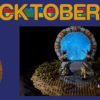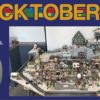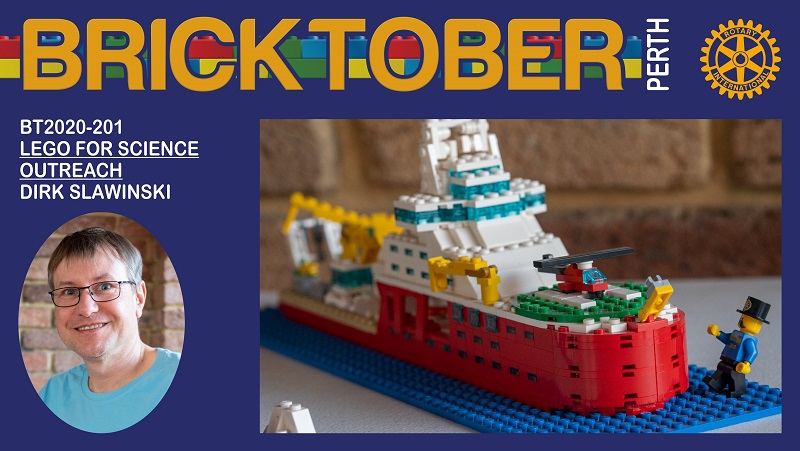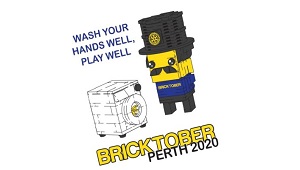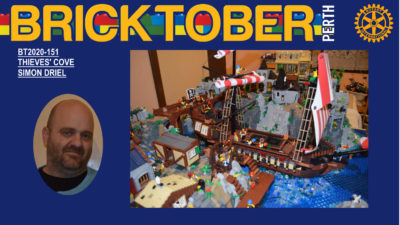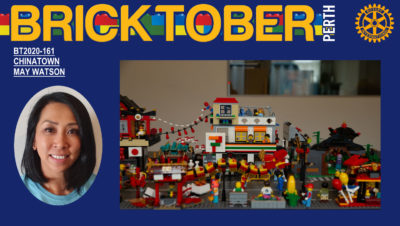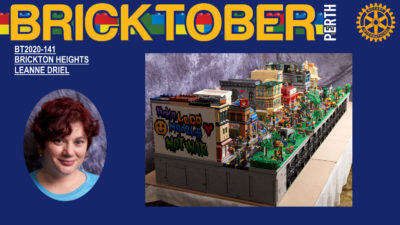Day 20-1
Dirk Slawinski
LEGO® for Science Outreach
Description
This display contains a host of Build-Your-Own models I created for science outreach. These include various native marine and terrestrial species of Western Australia. Instructions and fact sheets are available here:
https://www.per.marine.csiro.au/staff/Dirk.Slawinski/outreach/build_your_own/species_of_western_australia.html
The display also contains models of research vessels, like CSIRO’s RV Investigator and BAS’s Sir David Attenborough used by marine scientists to investigate the ocean off the coast of Western Australian and beyond. You can find out more about them here:
https://mnf.csiro.au/
The display ALSO contains models of various autonomous instruments which measure and sample our oceans where it is not easy to do for people or vessels.
https://www.per.marine.csiro.au/staff/Dirk.Slawinski/outreach/autonomous_instruments.html
PICS -click here & scroll ↓
Dirk Slawinski

Interview
Bio
Hello fellow LEGO® fans!
My name is Dirk Slawinski and I am a Senior Experimental Scientist with CSIRO’s Oceans and Atmosphere. I work on a wide range of marine science projects connecting various datasets we collect or model so we can piece together answers to questions about the environment. Questions like:
“Why are the oceans warming?”
“What effect does a warming ocean have on coastal benthic communities?”
“Where do baby lobsters go after their eggs hatch?” … and
“How can we use our reefs without hurting what is living there?”
Just like LEGO®, the pieces can fit together in many different ways. “Research” is figuring out how those pieces should, or at least can, fit together. “Science” is making the instructions which make sense to the reader/builder afterwards. And yes, sometimes there are extra pieces and sometimes there are missing pieces, but that is nature for you.
As you can see LEGO® is an integral part of how I think, I like to make concepts ‘click’ together in meaningful way. I have been building LEGO® as long as I can remember. I do not recall my 1st set which I probably got when I was around 4 or 5 but I remember it having red hubs (with a metal axel stud) and black rubber wheels so it was likely a car. I still have some of my LEGO® from back then including original minfigs which had the arms moulded to the body! I am not sure I ever had a time where I did not have access to some kind of LEGO® but shortly after Uni there were a few years where my “specials” lay dormant in a box.
In recent times my love of LEGO® has expressed itself as an extension to my love of science. I create kits for my organization and others to engage kids and communities at large. It is a bit of STEM or more properly STEAM as the A for “art” plays a role here for creative endeavours. The tactile connection that comes from building helps with making science discussion fun … at least I hope it does. It gives scientists the opportunity to talk with people and of course vice versa when we build together at outreach events.
This creative nature means I am not a set collector and I rarely buy kits unless they strike a chord somewhere or they are just too cool to ignore based on their build technique. I also do not design and build large display sets as my models are meant to be handled and played with.
About the Display
This display is a cumulative work over several years. Every year I add one or two models depending on the need or the whim of my creative nature.
I really like SNOT building as it allows for more rounded natural bodies for my models. The Whale Shark, Humpback Whale and Baby Dugong are good examples of that. Having the studs in various directions means I was able to add fins and flippers that visually make sense and can have articulation. I also find bars useful for structural purposes, a 1 stud connection is not particularly strong for a model meant to be played with. Adding a bar skeleton can help strengthen models and parts a great source of shapes which can be connected in. If you look you should be able to see screwdrivers, pot handles and whips used as antennas, cleavers and flags used as fins and others.
Find Mr. Brick
Try to find Mr. Brick in the photos and if you can’t then scroll down to find out where he is.
He’ll be standing next to Sir David.
Set Number
Dirk Slawinski Set Number: BT2020-201

